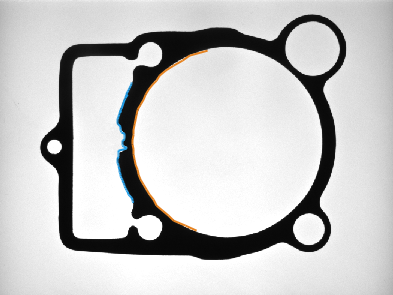You are here: Start » FIL.NET » Function Reference » Path » Path Spatial Transforms » FIL.PathAlongPath
Transforms a path to a coordinate system in which the 'axis' path is vertical or horizontal.
| Namespace: | FilNet |
|---|---|
| Assembly: | FIL.NET.dll |
Syntax
public static void PathAlongPath ( FilNet.Path inPath, FilNet.Path inAxis, FilNet.Axis inAxisType, float inAxisCoordinate, bool inInverse, FilNet.Path outPath )
Parameters
| Name | Type | Range | Default | Description | |
|---|---|---|---|---|---|
 | inPath | FilNet.Path | Input path. | ||
 | inAxis | FilNet.Path | Input axis path. | ||
 | inAxisType | FilNet.Axis | Y | Type of axis the input axis path is parallel to. Default value: Y. | |
 | inAxisCoordinate | float | 0.0f | Coordinate of the axis path. Default value: 0.0f. | |
 | inInverse | bool | True | Switches to the inverse operation. Default value: True. | |
 | outPath | FilNet.Path | Transformed path. |
Description
Examples
 |
 |
ImageAlongPath performed on the sample image with inAxisType = X and inScanWidth = 50. Blue path on output image was reprojected on original image using PathAlongPath with inAxisType = X, inAxisCoordinate = 25, inInverse = true. ImageAlongPath and PathAlongPath used the same path (the orange one) for transformations.
Remarks
No new points are being added to input path during transformation, and this may lead to some "distortions" of path. This is especially visible on long, straight portions of input path, which are described with only 2 points: the beginning one and the ending one. After transformation, such part of path is still a line, but it may not be corresponding to the transformed image. Easy way to overcome this problem is to increase number of points creating an transformed path.
Errors
List of possible exceptions:
| Error type | Description |
|---|---|
| DomainError | Empty path on input in PathAlongPath. |

